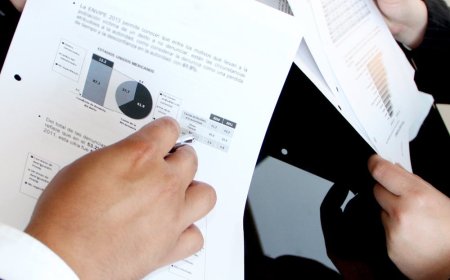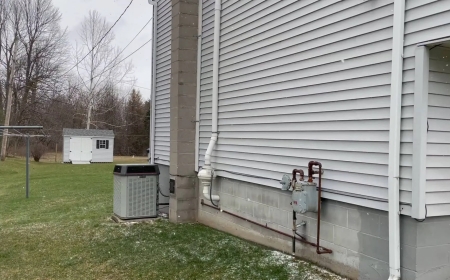How To Find Salads Southwest Dallas
How to Find Salads in Southwest Dallas Southwest Dallas is a vibrant, culturally rich region with a growing food scene that reflects its diverse communities, evolving tastes, and increasing demand for healthy, fresh dining options. While the area has long been known for its barbecue, Tex-Mex, and soul food, the rise in health consciousness and dietary awareness has sparked a quiet revolution in sa
How to Find Salads in Southwest Dallas
Southwest Dallas is a vibrant, culturally rich region with a growing food scene that reflects its diverse communities, evolving tastes, and increasing demand for healthy, fresh dining options. While the area has long been known for its barbecue, Tex-Mex, and soul food, the rise in health consciousness and dietary awareness has sparked a quiet revolution in salad offerings. From farm-to-table bowls to gourmet grain salads and plant-based wraps, Southwest Dallas now boasts an impressive selection of salad-centric eateries — if you know where and how to look.
This guide is designed to help you navigate the landscape of salad options in Southwest Dallas with precision, efficiency, and confidence. Whether you're a local resident seeking lunch alternatives, a health-conscious commuter, or a visitor exploring the area’s culinary diversity, understanding how to find the best salads in this region requires more than just a Google search. It demands a strategic approach — one that combines digital tools, local knowledge, and an awareness of neighborhood-specific trends.
In this comprehensive tutorial, you’ll learn a step-by-step method to uncover hidden salad gems, avoid misleading listings, identify truly fresh ingredients, and make informed choices based on dietary needs, nutritional value, and sustainability. We’ll also explore best practices, essential tools, real examples from popular Southwest Dallas neighborhoods, and answer the most common questions locals and newcomers alike ask when searching for quality salads.
By the end of this guide, you won’t just know where to find salads — you’ll know how to evaluate them, compare them, and choose the ones that align with your lifestyle, values, and taste preferences.
Step-by-Step Guide
Step 1: Define Your Salad Criteria
Before you begin searching, clarify what you mean by “salad.” The term is broad and can refer to anything from a basic iceberg lettuce combo with bottled dressing to a nutrient-dense, chef-crafted bowl with organic greens, roasted vegetables, legumes, seeds, and house-made vinaigrettes. Start by answering these questions:
- Do you prefer vegetarian, vegan, gluten-free, or keto-friendly options?
- Are you looking for pre-made salads or customizable bowls?
- Is freshness of ingredients more important than price?
- Do you need delivery, takeout, or dine-in?
- Are you willing to travel farther for higher quality, or do you prioritize proximity?
Defining these criteria upfront will prevent you from wasting time on irrelevant results and help you filter options more effectively during your search.
Step 2: Use Location-Specific Search Queries
Generic searches like “best salads near me” often return chain restaurants or generic listings that don’t reflect the true quality or variety available in Southwest Dallas. To get precise results, use location-specific keywords that match how locals refer to the area.
Instead of “salads in Dallas,” try:
- “Fresh salads in Oak Cliff”
- “Healthy salad bowls near Trinity Groves”
- “Vegan salad bar in Cedar Hill”
- “Organic greens delivery South Dallas”
- “Best grain salad in Wilmer”
These phrases are more likely to surface local businesses that cater specifically to health-conscious diners in those neighborhoods. Google’s algorithm prioritizes local intent, so including neighborhood names increases your chances of discovering authentic, community-driven spots.
Step 3: Leverage Google Maps with Advanced Filters
Google Maps is one of the most underutilized tools for finding quality food options. Here’s how to use it effectively:
- Open Google Maps and type your chosen search phrase (e.g., “vegan salad bar Oak Cliff”).
- Click the “Filters” button on the left sidebar.
- Enable “Vegetarian Friendly,” “Vegan Options,” and “Takeout” if applicable.
- Sort by “Highest Rated” — but don’t stop there.
- Read the most recent reviews (last 30–60 days) to ensure consistency in quality.
- Look for mentions of “fresh ingredients,” “house-made dressing,” “no preservatives,” or “local produce.” These are indicators of quality.
- Check photos uploaded by users — real images of the salad bowls reveal portion size, color variety, and presentation.
Pay attention to businesses with 4.7+ ratings and 50+ reviews — these are typically more reliable than places with only a handful of glowing reviews.
Step 4: Explore Local Food Blogs and Instagram Influencers
Many of the best salad spots in Southwest Dallas are small, independent businesses that don’t invest in paid advertising. They thrive through word-of-mouth and social media presence.
Search Instagram using hashtags like:
OakCliffSalads
SouthDallasEats
DallasHealthyEating
SaladBowlDallas
FreshAndLocalDallas
Follow local food bloggers such as “Dallas Eats Daily,” “The Healthy Texan,” or “Southside on Lamar” — they regularly feature hidden gems and often tag exact locations. Many of these influencers visit businesses multiple times and provide honest assessments of ingredient quality, portion sizes, and value.
Don’t ignore Facebook Groups. Communities like “Oak Cliff Foodies” or “South Dallas Local Eats” are treasure troves of real-time recommendations. Members often post photos of their meals, share menus, and warn about inconsistent quality — information you won’t find on review platforms.
Step 5: Visit Farmers Markets and Local Producers
Many of the best salad ingredients in Southwest Dallas come from local farms and markets. Visiting these venues can lead you directly to restaurants that source their produce locally — a strong indicator of quality and freshness.
Key markets to explore:
- Trinity Farmers Market (Trinity Groves): Hosts vendors who supply local restaurants with seasonal greens, herbs, and heirloom vegetables.
- Dallas Farmers Market (Main Street): Features multiple food stalls offering pre-made salads and salad kits.
- South Dallas Farmers Market (on S. Hampton Rd): Smaller but highly trusted by residents; often has salad-focused vendors.
Ask vendors: “Which restaurants in the area buy your greens regularly?” You’ll often get names of places that prioritize freshness over mass production.
Step 6: Check Menus Online — Look for Specifics
Don’t rely on generic menu descriptions like “House Salad.” Instead, look for menus that specify:
- Types of greens (e.g., arugula, kale, mizuna, spinach — not just “mixed greens”)
- Produce sourcing (“locally grown tomatoes,” “organic cucumbers”)
- Dressing ingredients (“cold-pressed olive oil,” “apple cider vinegar,” “no high-fructose corn syrup”)
- Protein sources (“grilled tempeh,” “heritage chicken,” “house-marinated chickpeas”)
- Special dietary labels (gluten-free, nut-free, dairy-free)
Restaurants that list these details are more likely to care about quality. Chains and fast-casual spots rarely include this level of transparency.
Step 7: Call or Message Directly to Ask Questions
If you’re unsure about an item’s ingredients or preparation, don’t hesitate to call or send a direct message via Instagram or Facebook. Ask:
- “Do you make your dressings in-house?”
- “Are your greens washed and prepped daily?”
- “Can I request no added sugar in the dressing?”
- “Do you use any pre-packaged or frozen salad components?”
Responses to these questions reveal a lot. A business that answers promptly and enthusiastically is more likely to prioritize freshness. A vague or automated reply may indicate a lack of care.
Step 8: Sample and Compare
Once you’ve narrowed your list to 3–5 options, visit or order from each one. Take notes on:
- Texture of greens (wilted? crisp?)
- Flavor balance (is the dressing overpowering or complementary?)
- Ingredient variety (are there at least 5–7 distinct components?)
- Portion size vs. price
- Temperature (are vegetables chilled? Is the salad served cold?)
Compare your experiences. The best salad isn’t always the most expensive — it’s the one that delivers the most satisfaction, nutrition, and value.
Step 9: Build a Personal Salad Map
After testing several spots, create your own digital or printed map of top-performing salad locations in Southwest Dallas. Include:
- Business name and address
- Best salad item
- Price range
- Delivery availability
- Special dietary notes
- Why you chose it (e.g., “best kale salad,” “only place with homemade tahini dressing”)
This becomes your personal reference guide — one that evolves as new spots open and others close. Share it with friends or neighbors who value healthy eating.
Step 10: Stay Updated Through Local News and Events
Keep an eye on local publications like The Dallas Morning News’s “Dining” section, Dallas Observer, and community newsletters like “Oak Cliff Life” or “South Dallas News.” These often feature “Best of” lists, pop-up salad events, and new restaurant openings.
Attend local food festivals such as “Taste of Oak Cliff” or “South Dallas Food Crawl” — many salad-focused vendors debut their signature bowls at these events.
Best Practices
1. Prioritize Seasonality Over Convenience
The most flavorful and nutritious salads are made with ingredients in season. In Southwest Dallas, spring brings arugula, radishes, and strawberries; summer offers tomatoes, cucumbers, and peaches; fall features kale, beets, and pomegranates; winter yields citrus and hearty greens. Restaurants that rotate their menus seasonally are more likely to use fresh, peak-quality produce.
2. Avoid “Salad Bars” at Supermarkets Unless They’re Replenished Daily
Many grocery store salad bars sit under heat lamps for hours, leading to soggy, oxidized greens. If you must buy pre-made, look for bars with clear labeling of prep times and frequent restocking. Ask staff when the salad was last refreshed.
3. Look for Transparency in Sourcing
Top salad spots proudly display their farm partners on menus or websites. Names like “Cedar Ridge Farm,” “Texas Organic Growers,” or “Dairyland Produce” signal a commitment to quality. If a restaurant says “locally sourced” without naming names, it’s a red flag.
4. Beware of “Healthy” Marketing Traps
Some restaurants label salads as “healthy” while loading them with fried toppings, sugary dressings, and processed cheeses. Always check the nutrition facts if available, or ask for dressing on the side. A salad with 800+ calories and 30g of sugar isn’t healthy — it’s a calorie bomb disguised as a salad.
5. Support Small, Independent Businesses
Independent salad shops in Southwest Dallas often have higher standards for ingredients and preparation than national chains. They’re more likely to experiment with unique flavors, offer vegan options, and use compostable packaging. Supporting them helps sustain a healthier local food ecosystem.
6. Order Dressings Separately
Even the freshest salad can be ruined by a heavy-handed pour of dressing. Always request dressing on the side — it lets you control the amount and prevents sogginess. Many places offer house-made vinaigrettes with olive oil, lemon, or balsamic — these are far superior to bottled alternatives.
7. Consider Meal Prep Options
Some local spots offer salad jars or meal-prep containers designed to stay fresh for 3–4 days. Look for businesses that layer ingredients strategically — dressing at the bottom, grains or proteins in the middle, greens on top — to prevent wilting. These are ideal for busy professionals.
8. Trust Your Palate, Not Just Ratings
A 4.9-star rating doesn’t guarantee a great salad. Someone might rate it highly because it’s cheap or convenient. Taste matters more than numbers. If a salad doesn’t excite you, keep looking.
Tools and Resources
1. Google Maps (with Filters)
Essential for location-based discovery. Use filters for dietary needs, delivery, and ratings.
2. Yelp
Useful for reading detailed reviews. Filter by “Most Recent” and look for comments about ingredient freshness and dressing quality.
3. Instagram
Search hashtags and follow local food accounts. Visual content reveals real food quality better than static menus.
4. HappyCow
Best for vegan and vegetarian salad spots. Covers independent restaurants often missed by mainstream platforms.
5. DoorDash, Uber Eats, and Grubhub
Filter by “Healthy” or “Salads” and sort by rating. Read descriptions carefully — some listings mislabel sandwiches as salads.
6. Local Food Directories
Check out Dallas Food Map or South Dallas Food Collective — curated lists of local eateries with detailed descriptions.
7. Farmers Market Apps
Use the “Texas Farmers Market” app to find weekly markets and see which vendors supply local restaurants.
8. Nutrition Databases
For calorie-conscious diners, use MyFitnessPal or Cronometer to log meals and track macros. Some local restaurants provide nutrition info upon request.
9. Community Boards
Check Nextdoor, Facebook Groups, and neighborhood newsletters for real-time recommendations and warnings.
10. Email Newsletters
Subscribe to newsletters from local food blogs or restaurants. Many send weekly updates on new salad specials, seasonal ingredients, and pop-up events.
Real Examples
Example 1: The Green House (Oak Cliff)
Located on Davis Street, The Green House is a small, family-run café that sources greens from a cooperative farm in East Texas. Their signature “Texas Harvest Bowl” features baby kale, roasted sweet potatoes, black beans, pickled red onions, sunflower seeds, and a turmeric-tahini dressing made daily. No preservatives. No processed oils. Menu changes weekly based on harvest. Customers often comment on the crispness of the greens and the balance of flavors. Delivery available via DoorDash. Price: $13.50.
Example 2: Nourish Kitchen (Trinity Groves)
Part of a wellness-focused food hall, Nourish Kitchen offers build-your-own salad bowls with over 20 fresh ingredients. Their “Southwest Superfood Bowl” includes quinoa, roasted corn, avocado, grilled chicken, charred jalapeños, cilantro-lime dressing, and pepitas. All produce is organic and delivered daily. They offer gluten-free and keto bowls with clear labeling. Popular among fitness professionals. No delivery — only takeout or dine-in. Price: $15.95.
Example 3: Salads by Sade (South Dallas)
A mobile salad cart operating out of a converted food truck, Salads by Sade serves vibrant, Afro-inspired bowls with ingredients like jollof rice, collard greens, plantains, and smoked paprika dressing. Her “Lagos Garden Bowl” is a fan favorite — packed with purple cabbage, roasted yams, and a spicy peanut sauce. She sources most ingredients from South Dallas farmers markets. Cash only. Open weekends. Price: $12.50.
Example 4: Fresh & Co. (Wilmer)
A hidden gem in a strip mall, Fresh & Co. offers pre-made salads in glass jars with layers designed to stay fresh for days. Their “Cobb Revival” includes smoked turkey, hard-boiled egg, avocado, cherry tomatoes, blue cheese crumbles, and a champagne vinaigrette. No artificial additives. Refrigerated display is always full. Locals call it “the only place in Wilmer you can get a real salad.” Takeout only. Price: $11.75.
Example 5: The Herb Garden (Cedar Hill)
Specializing in herbal infusions, The Herb Garden adds edible flowers and herbs like borage, chive blossoms, and lemon verbena to their salads. Their “Spring Bloom Salad” includes butter lettuce, edible pansies, shaved fennel, goat cheese, and a lavender-infused honey vinaigrette. A favorite among wellness retreat attendees. Open for lunch only. Price: $16.50.
FAQs
Q: Are there any salad-only restaurants in Southwest Dallas?
A: While no restaurant is exclusively salad-based, several specialize in salads as their core offering. The Green House, Nourish Kitchen, and Salads by Sade are the closest to salad-focused concepts. Others include salads as part of a broader menu but prioritize them in quality and variety.
Q: Can I find vegan salads in Southwest Dallas?
A: Yes. Many local spots now offer dedicated vegan salads with plant-based proteins like tempeh, jackfruit, lentils, and tofu. Nourish Kitchen, The Green House, and Salads by Sade all have multiple vegan options clearly labeled.
Q: Are salads in Southwest Dallas expensive?
A: Prices range from $11–$17, which is comparable to other urban areas. While some premium spots charge more due to organic sourcing, many offer excellent value. Mobile vendors and farmers market stalls often provide the most affordable options.
Q: Do any places offer salad delivery?
A: Yes. The Green House, Nourish Kitchen, and Fresh & Co. all partner with delivery apps. Salads by Sade offers limited weekend delivery via local couriers. Always check the delivery radius — some places only deliver within a 3-mile zone.
Q: How do I know if a salad is truly fresh?
A: Look for crisp, vibrant greens with no browning or wilting. The vegetables should be cool to the touch. Dressings should be light and aromatic, not oily or overly sweet. If the salad looks dull or smells metallic, it’s not fresh.
Q: What’s the best time to buy a salad for maximum freshness?
A: Lunchtime (11 a.m.–1 p.m.) is ideal, as most places prepare salads fresh in the morning. Avoid buying after 4 p.m. unless it’s a pre-packaged, refrigerated option from a trusted vendor.
Q: Can I request customizations?
A: Most independent spots welcome customizations — ask for no cheese, extra protein, or dressing on the side. Chains may limit options, but local businesses are usually flexible.
Q: Are there salad subscription services in Southwest Dallas?
A: Not yet. However, some restaurants offer weekly salad boxes for pickup — check with The Green House and Fresh & Co. for seasonal offerings.
Q: What’s the most popular salad ingredient in Southwest Dallas right now?
A: Kale and quinoa remain staples, but local favorites now include roasted beets, charred corn, pickled radishes, and smoked paprika-spiced chickpeas. Herbs like cilantro, mint, and basil are increasingly used for flavor depth.
Q: How can I support local salad businesses?
A: Leave honest reviews, share their posts on social media, recommend them to friends, and visit during off-peak hours to reduce wait times. Buy gift cards or sign up for newsletters to stay engaged.
Conclusion
Finding great salads in Southwest Dallas isn’t about stumbling upon the nearest chain — it’s about engaging with the community, asking thoughtful questions, and trusting your senses. The region’s salad scene is evolving rapidly, fueled by local farmers, passionate chefs, and residents who demand better food options. By following the steps outlined in this guide — from using precise search terms to visiting farmers markets and evaluating ingredient transparency — you’ll uncover a world of flavor, nutrition, and authenticity that goes far beyond the typical lettuce-and-tomato combo.
The best salads in Southwest Dallas aren’t always the most advertised. They’re the ones made with care, sourced with intention, and served with pride. Whether you’re fueling your body for a long day, seeking a light lunch after work, or simply craving something fresh and real, the right salad is out there — waiting for you to find it with purpose.
Start with one step today. Open Google Maps. Search “fresh salads Oak Cliff.” Browse the top three results. Read a few recent reviews. Then, go try one. Your next favorite salad is just a few clicks — and one bite — away.




































